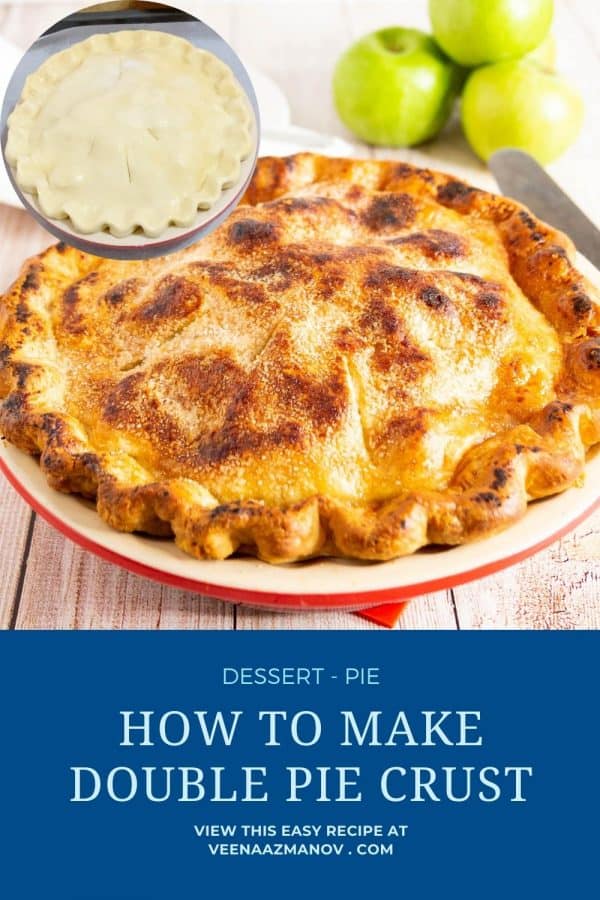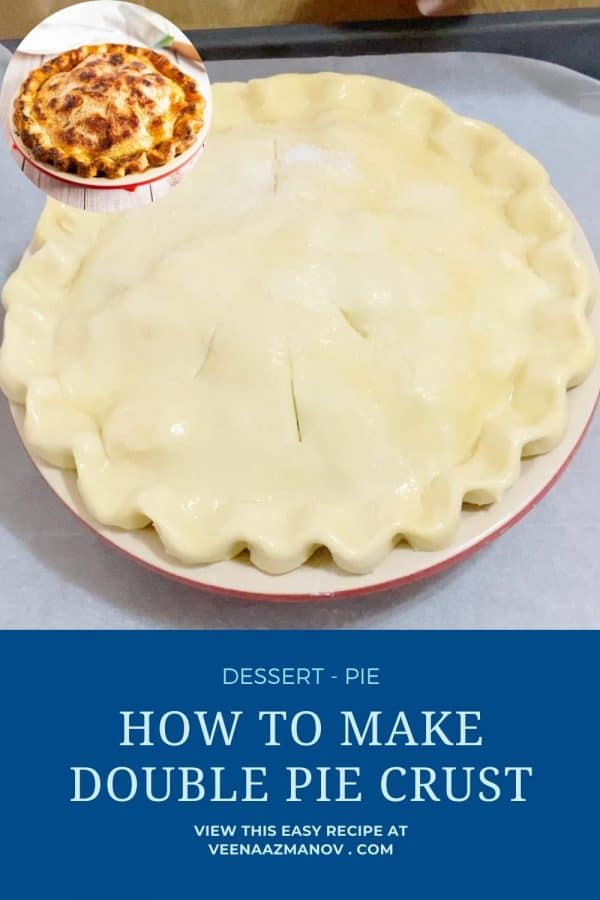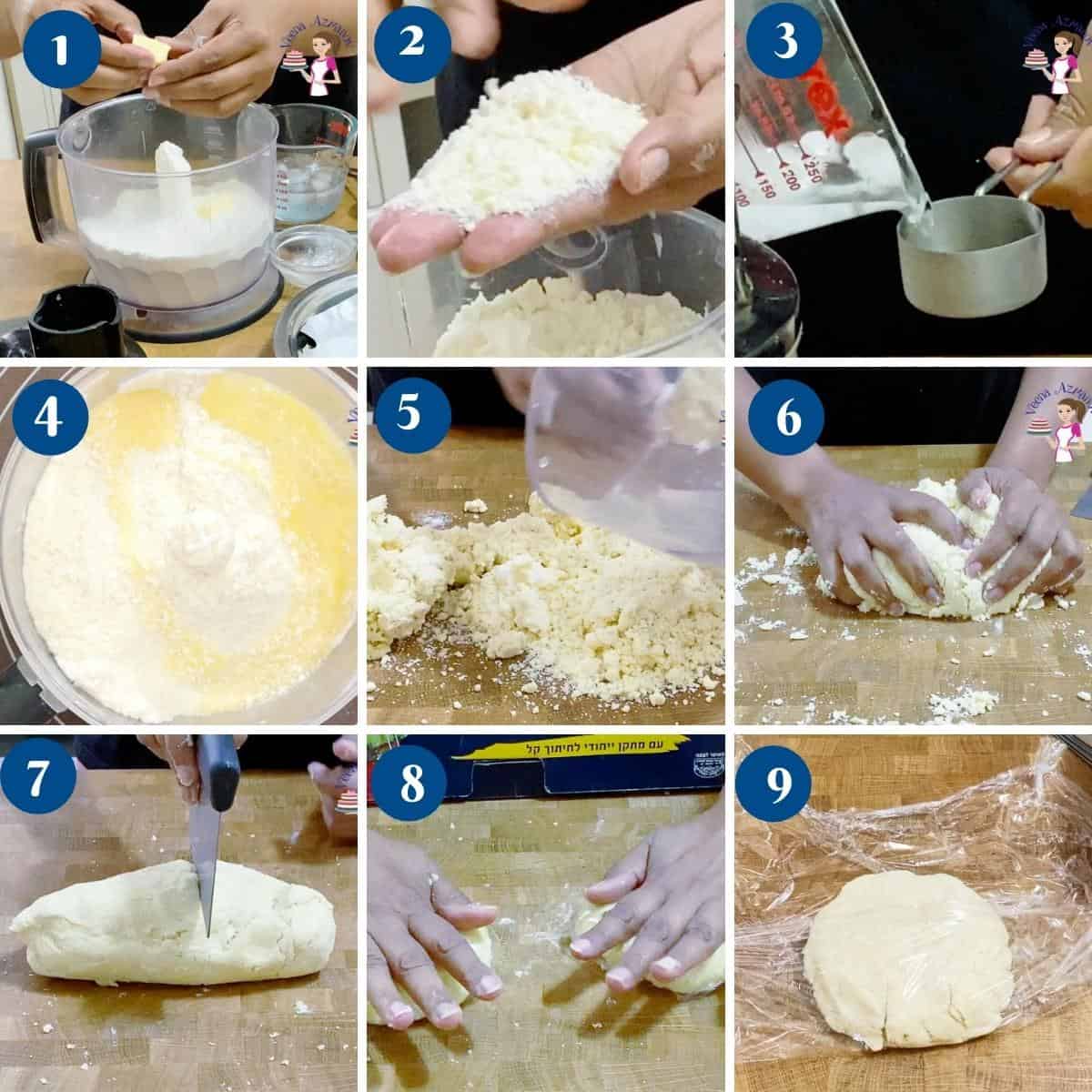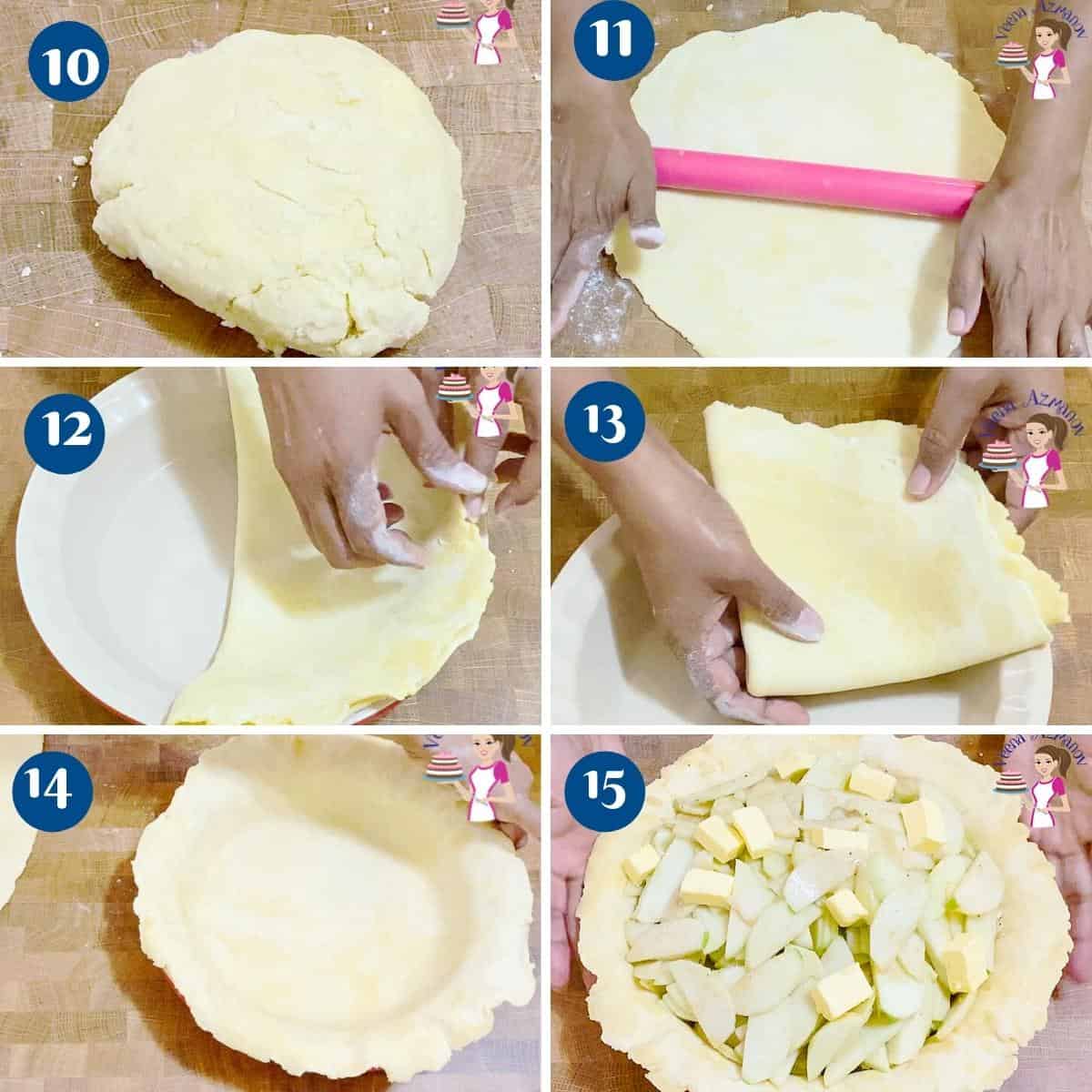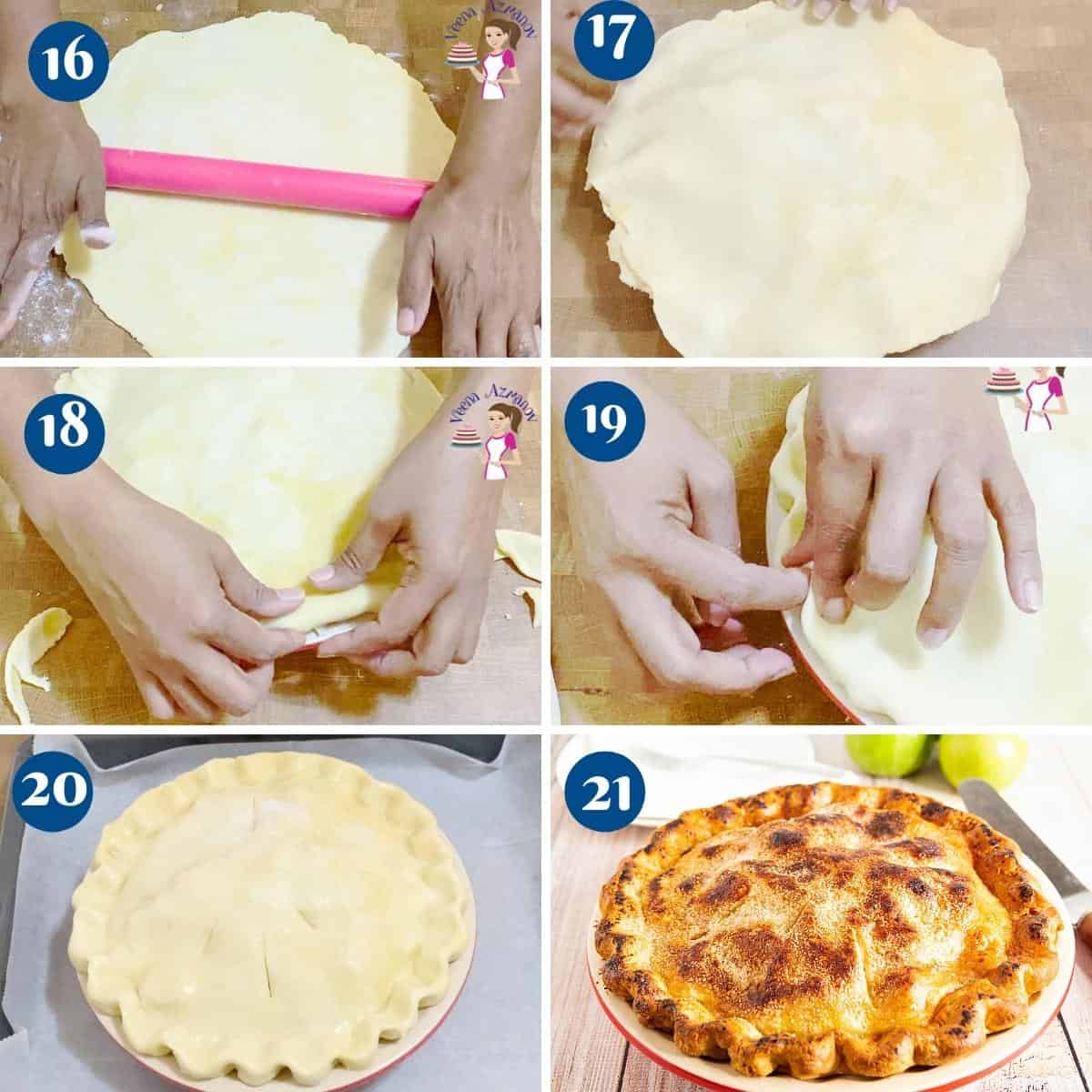A good pie crust recipe is a must-have for any baker. One that you can use without trial and error. While there are many versions of pie dough, each claiming to be the best, the basic ingredients are almost always the same. Some will use a combination of butter and lard for fat and others will use vodka in place of water. And yet, while they are all very promising, I think this is the absolute winner every single time.
Step by step instructions
Pie dough
In the bowl of a food processor – add the flour, salt, and butter. Pulse for 30 seconds until bread crumb consistency. You can also use a bowl and pastry blender.Pro tip – A flaky pie crust must have a good combination of small and big pieces of butter. So, don’t pulse too long. Add the chilled water through the feeder. Pulse another 30 to 40 seconds until almost combined.Pro tip – The dough should still look crumbly but when you squish a little with your fingers it should shape into a ball. Invert the crumbly mixture on a clean work surface. Gather it all into a ball without kneading.Pro tip – We do not want to activate the gluten in our dough so we avoid kneading. Divide into two – more for the bottom crust, less for the top crust (see video). Wrap each portion in plastic wrap and chill for at least an hour.Pro tip – You can keep these in the fridge for up to 3 days or freeze them for up to 3 months.
Roll the bottom crust
Dust the work surface with flour. Open the larger disc for the bottom and roll carefully. Use your 9-inch pie pan as a guide to see how big you need it.Pro tip – If you find the crust is breaking around the edges too much, it means that it is too hard to roll. Leave it to rest on the counter for just 7 to 10 minutes. Then, roll again, press the broken edges together with your fingertips. To transfer the dough to the pan without breaking, fold the pastry in half, then into quarters. Then, place it on the pie pan and unfold.Pro tip – Alternatively, you can roll the dough onto your rolling pin and unroll it over the pie pan (folding in quarters is easier for newbies). Gently fit it to the pie pan especially in the bottom edges with light hands. Place the lined pie in the fridge while you prepare the filling.Pro tip – You need about an inch more than the edge of your pie pan so you can trim the excess dough.
Add the filling
Preheat the oven to the temperature directed in the recipe. Fill the lined and chilled bottom pie crust with filling (today I am using apple pie filling).
Roll the top crust
Roll the top crust – Dust the work surface with flour. Open the larger disc of pie crust for the top of the pie and roll it larger than the pie pan (about 12 inches).Pro tip – Use your pie pan as a guide to know how big you need it plus extra for crimping. Cut excess – Place the second disc on top. Cut off excess at the edges leaving an inch of overhang. Crimp the edges – Fold the top pastry under the bottom pastry (see video). Crimp the edge by forming a V shape with your thumb and index finger (see video).Pro tip – Alternatively, you can make impressions around the pie using the tings of a fork. Brush with egg wash. For my apple pie, I also sprinkle it with granulated sugar. Sugar adds a nice crunch but can be omitted.Pro tip – For the egg wash, combine the egg and water. Then, use a pastry brush to brush it on the pastry. Place the pie on a baking tray to catch any juices. Cut a few slits on the top crust with a knife. I like to do about 6 to 8 cuts.Pro tip – The slits or cuts on the top crust are for steam to escape so the pastry won’t puff up and break.
Bake
Bake the pie as directed in your recipe. As a guide here is how I bake my pies with a double crust. Bake at 400°F / 200°C / Gas Mark 6 for 15 minutes. Then, reduce the temperature to 350°F / 177°C / Gas Mark 4 and cook another 35 to 40 minutes.Pro tip – After 20 to 25 minutes, cover edges loosely with foil or pie shield to prevent the top crust from becoming too dark.
More crust recipes
Single pie crust – Pie crust with shortening Sweet shortcrust pastry or Rich shortcrust pastry Danish pastry, Croissants, or Puff pastry Choux pastry, cream puffs, or profiteroles Different types of pastry – explained
Frequently asked questions
Troubleshooting
Sooggy pie – Sometimes, when the pie filling is too liquidy it can soak into the bottom pie crust making it soggy. One way to avoid it is to brush the bottom pre-baked pie crust with egg whites. This essentially creates a seal between the crust and the filling. Crust is too wet – If you added too much water – just add a tablespoon or two of flour and bring it all together. And if the dough is soft and sticky, which usually appears wet, it means the dough is probably too warmed up. Shape it into a ball and wrap it in cling wrap. Chill it until it is firm enough to roll. Pie shinking – It’s best to chill the pastry before you bake it. That makes sure the butter stays cold. When baked, the butter melts into the dough and makes a beautiful flaky crust. And if the crust is not cold the dough tends to shrink.
Did you LIKE this recipe? Save it for later. You can find my recipes on Pinterest. Follow me on Facebook, Twitter, and Instagram.Subscribe, and I’ll send you new recipes right to your inbox.
Thank you for sharing - Save for later
